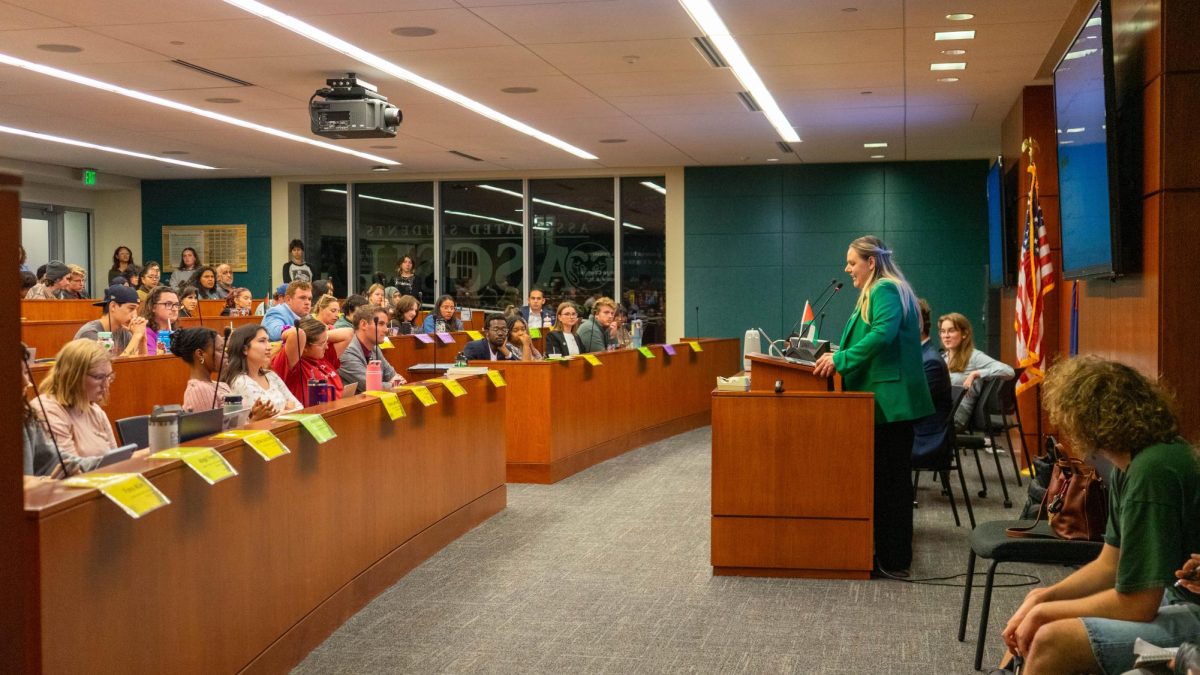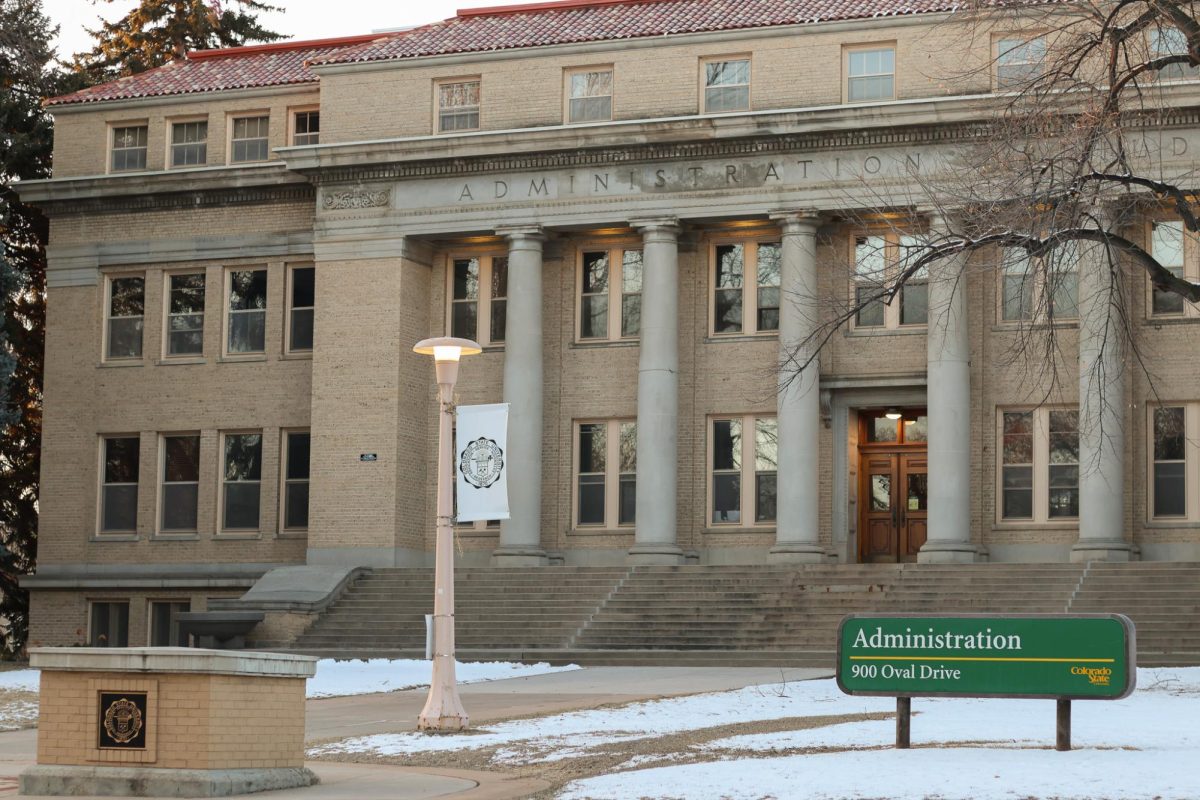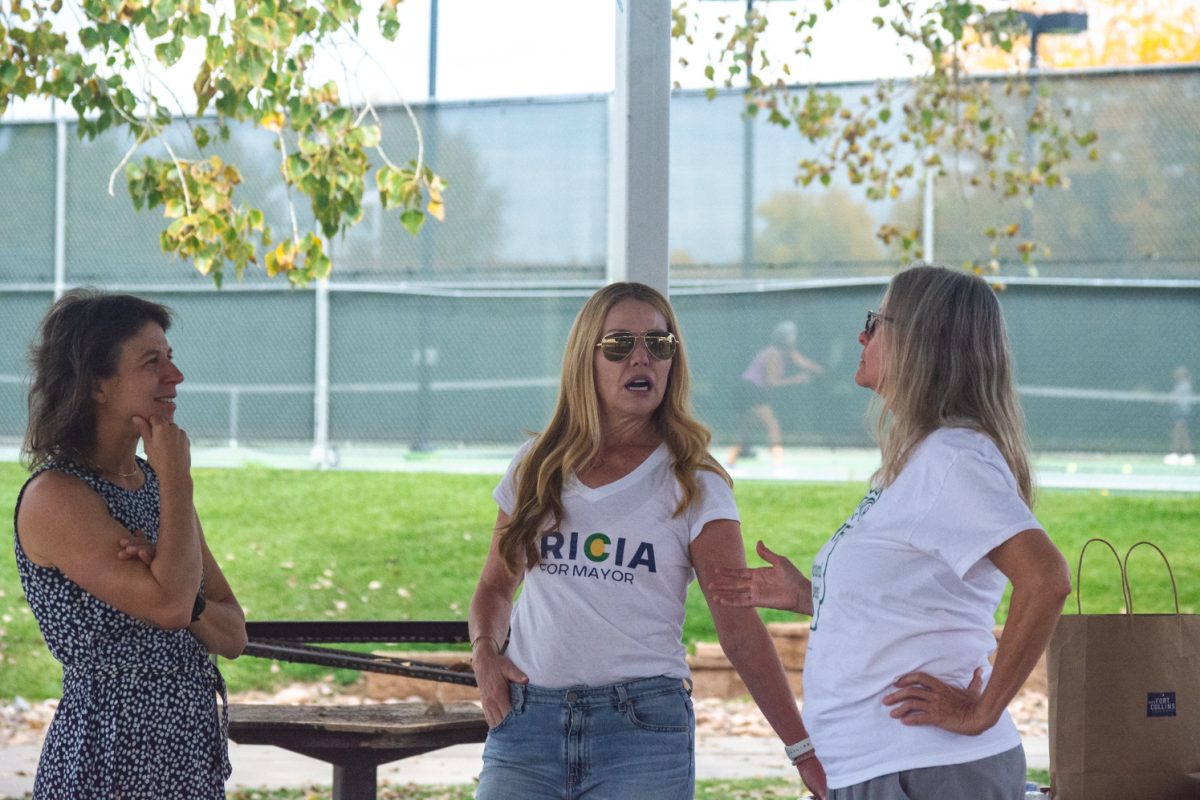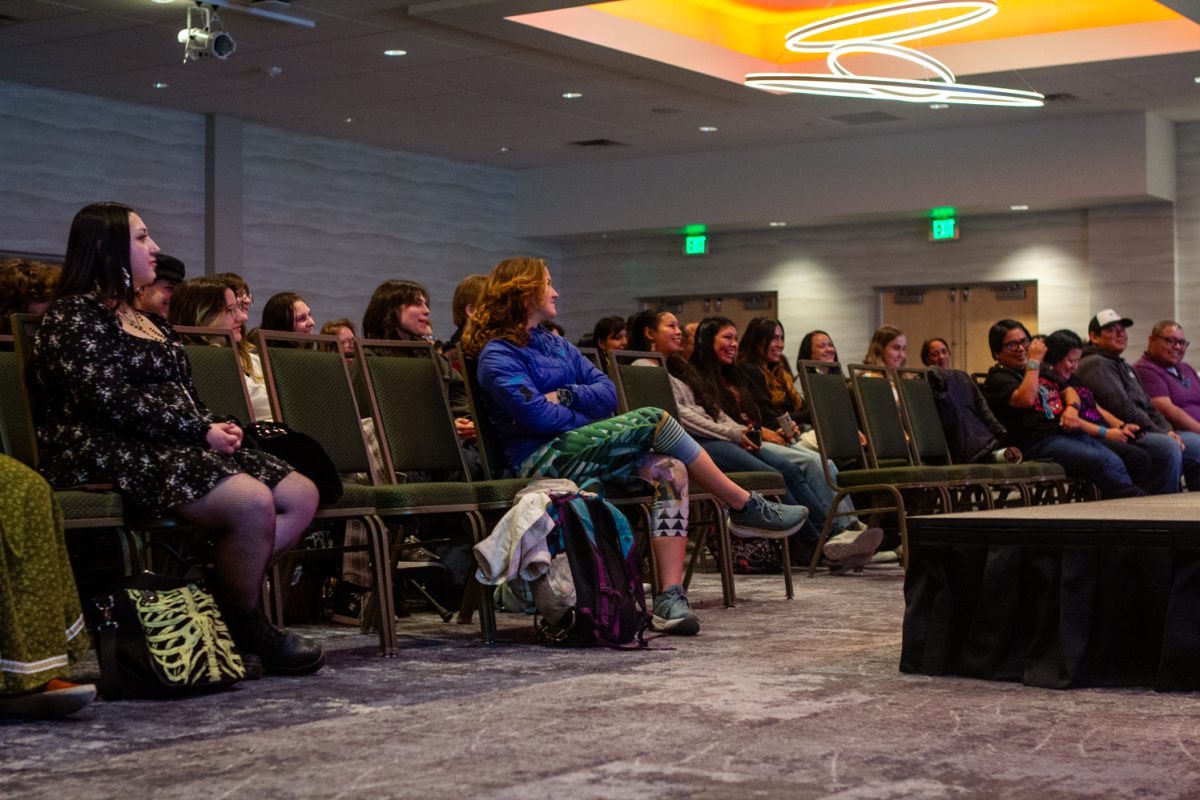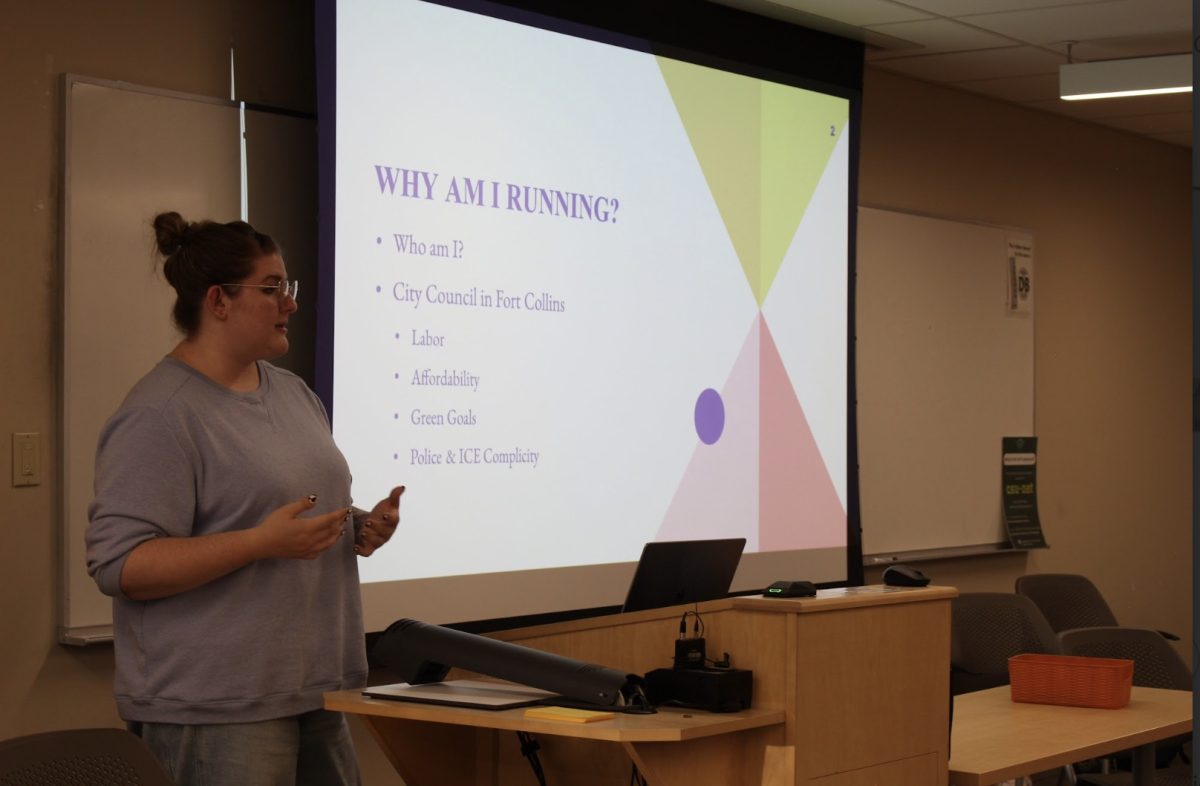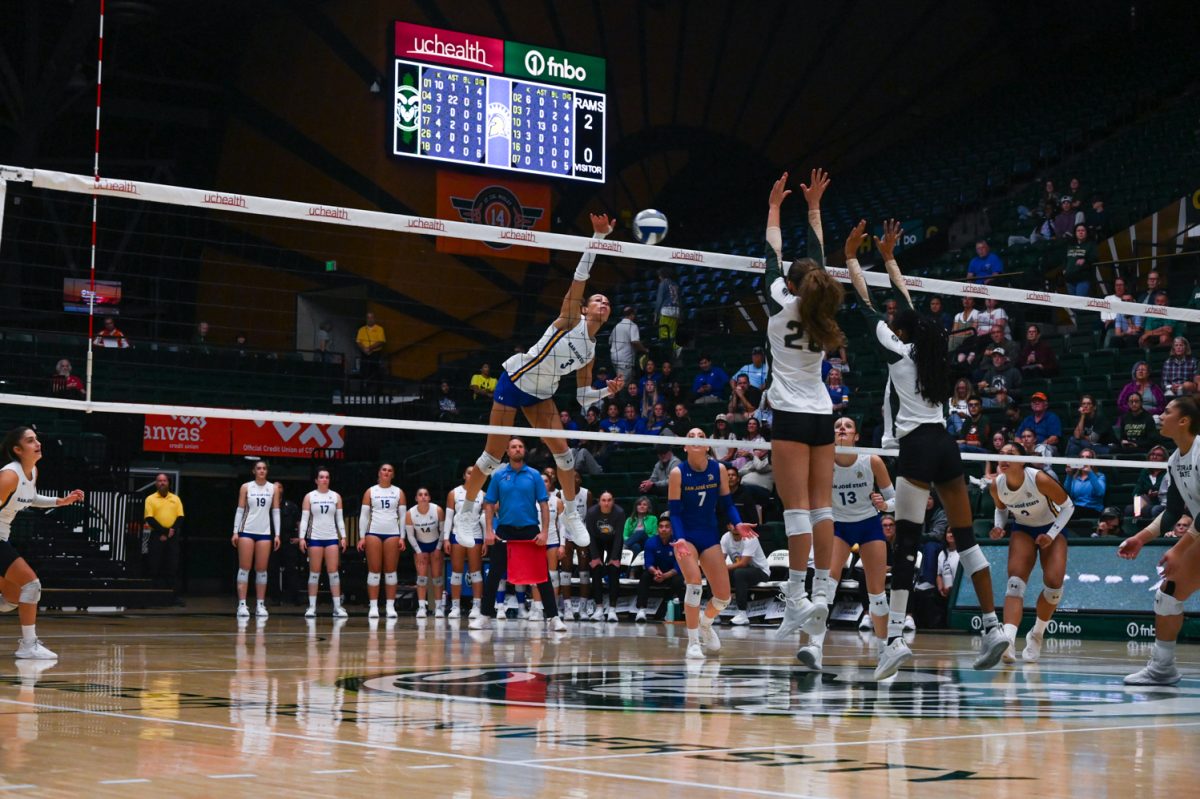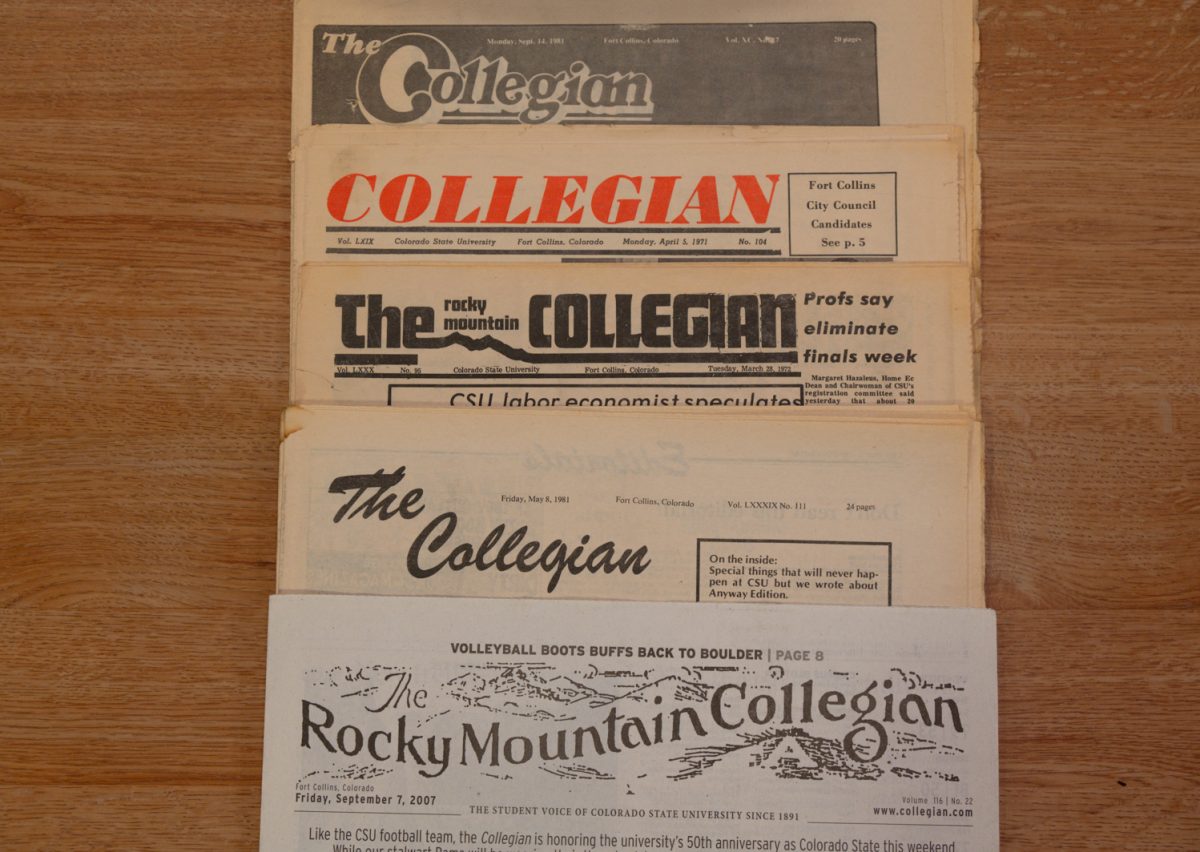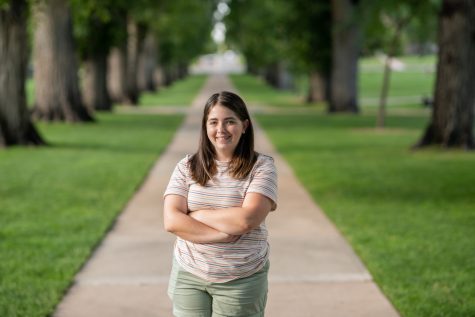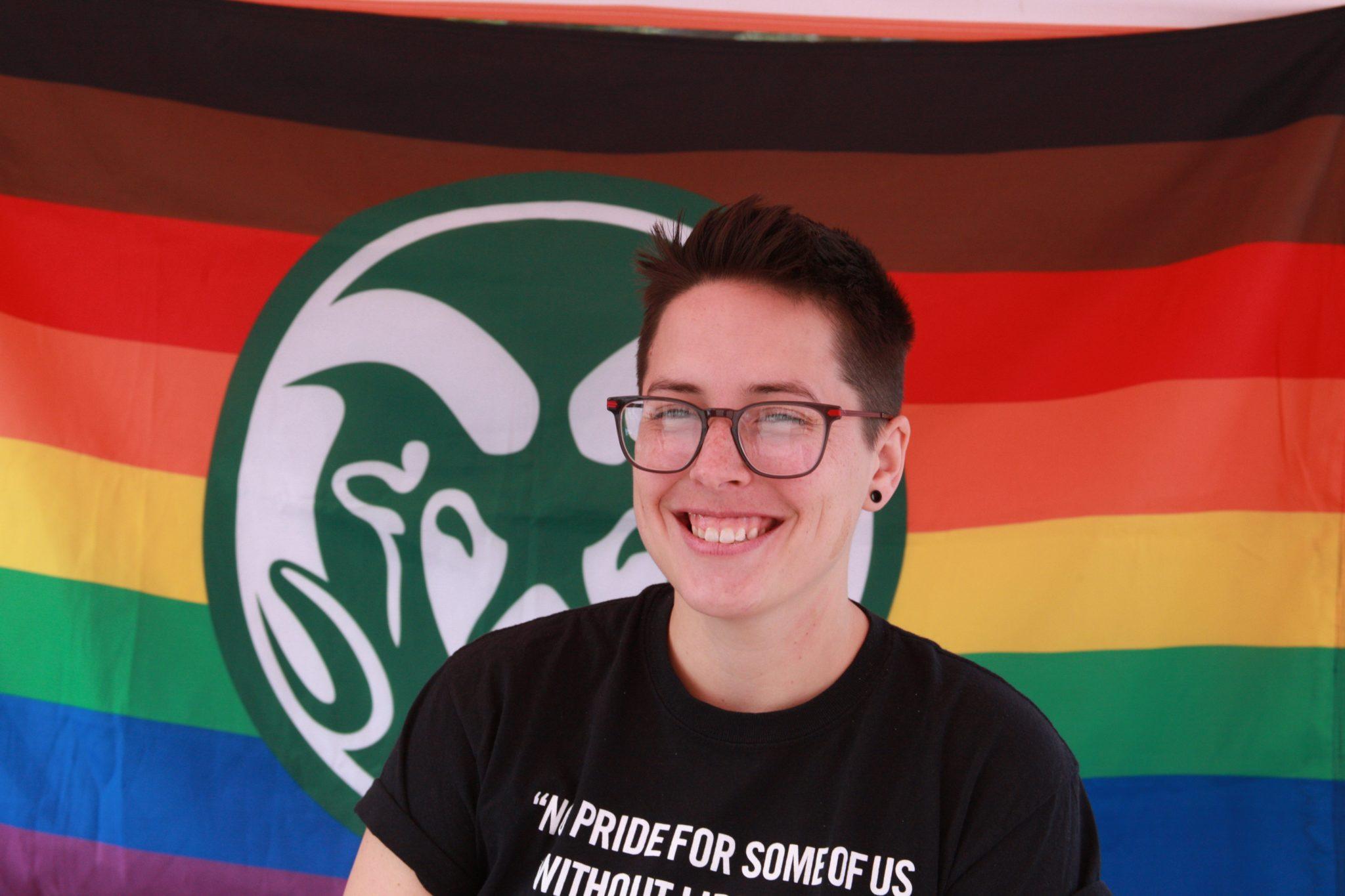
Maggie Hendrickson was never very fond of the boxes society has tried to put them in.
Growing up, Hendrickson’s peers never seemed pleased with the way they presented themself. When they dressed in the way that felt most comfortable to them, they weren’t “girly” enough for others, but when they tried to fit in, it wouldn’t appease anyone either.
“I remember being at summer camp,” Hendrickson said. “I went to an all girls camp, and … people called me a tomboy. I was into sports, wasn’t into makeup or anything, and I remember I would get made fun of for not looking ‘girly enough,’ and then when I would try to look how I thought people wanted me to look, … they’d make fun of me regardless for not fitting in their box, or I was something to ogle at, or a spectacle.”
It wasn’t until Hendrickson started graduate school and learned more about the gender binary (or lack thereof) that they felt they better understood where they fit in.
“I was meeting more and more (transgender) and nonbinary people and hearing their experiences and following more people on social media,” Hendrickson said. “I was like ‘Oh, sh*t, this … fits my experience.’”
“I try as much as I can to normalize that it’s a weird and scary thing to question gender, gender expression, sexuality, whatever because the way that we are brought up is just that; it’s really present that there’s one way that you should be.” -Maggie Hendrickson, Pride Resource Center assistant director
For about five years now, Hendrickson has identified as trans and nonbinary masculine, as well as queer. They said that claiming to be trans has helped them be more confident and comfortable with who they are and to reconcile the expectations others have for them with what they hope for themself.
As assistant director of the Pride Resource Center at Colorado State University, Hendrickson is not only able to be openly queer in their work but is able to help students and others in the community find a safe space to understand their own sexualities and gender identities.
“I try as much as I can to normalize that it’s a weird and scary thing to question gender, gender expression, sexuality, whatever because the way that we are brought up is just that; it’s really present that there’s one way that you should be,” Hendrickson said.

Hendrickson added that no matter what someone is questioning, whether it’s attraction, lack of attraction, how they dress or talk, how they see themselves or who they want to end up with, it can be scary, strange and isolating, but it is normal, and they are not alone.
It is also important, Hendrickson said, that people do not feel as though they are not “queer enough” or “trans enough” to belong to the LGBTQ+ community. The Pride Center is available to anyone who is questioning, no matter what it may be.
“It’s a journey of humans mak(ing) up these words, and you’re like, ‘Am I enough of this to use that word?’ And I think it’s just empowering to try it on, and if it changes, it changes,” Hendrickson said. “The way I identify might change in 10 years.”
Within the LGBTQ+ umbrella exist many terms and spectrums that people fall under, including along the trans and nonbinary spectrum. Hendrickson compared learning these new possibilities of identity to learning a new language.
“I often say, ‘How do you know a color can be your favorite color if you’ve never seen the color before?’” Hendrickson said. “I didn’t know a lot about trans experiences or that nonbinary was even an option. … It was a lot of learning that, like, ‘Oh, there’s more than these two options,’ and things that I had thought were just weird or different or isolating about myself were actually things that other people experienced.”
Looking at the lengthy list of words Hendrickson could use to identify themself felt empowering, they said. While at first trying to find the right word was intimidating and overwhelming, it felt good for Hendrickson to sit down and see the possibilities beyond the box of the binary.
“I don’t really feel tied to how I was assigned at birth,” Hendrickson said. “Nonbinary feels the best way because it also feels pretty open-ended, pretty broad, that there’s lots of ways to be nonbinary. … I think we try to piece together multiple words to get a little more accurate to our experiences, (and) I think a lot of us identify with multiple terms.”
Hendrickson said that in the Safe Zone trainings they conduct, they often talk about why there are so many labels in the LGBTQ+ community and why they matter and need to be respected.
“I think in a perfect world, yes, I would love if we didn’t have any labels and we could just exist in all the different ways we exist,” Hendrickson said. “But because these two labels of man and woman … were so enforced and policed and if you didn’t fit in that box, you were different and other, rather than calling myself broken or different or wrong, I want to call myself a name.”
The word cisgender exists, Hendrickson said, because this way, instead of saying people are either normal or transgender, they are either cis or trans. It gives honor and respect to people who don’t fit in society’s expectations around normative identities, Hendrickson said.
“(Because) if I didn’t have the word nonbinary, I wouldn’t know how to make sense of my reality,” Hendrickson said. “I would just be like, ‘I’m different, there’s no one like me.’ Whereas picking that word allows me to find community, to find self respect. … It allows us to see ourselves and see other people who are similar, and that’s one of the most hopeful and helpful components for LGBTQ+ people.”
Serena Bettis can be reached at news@collegian.com or on Twitter @serenaroseb.



